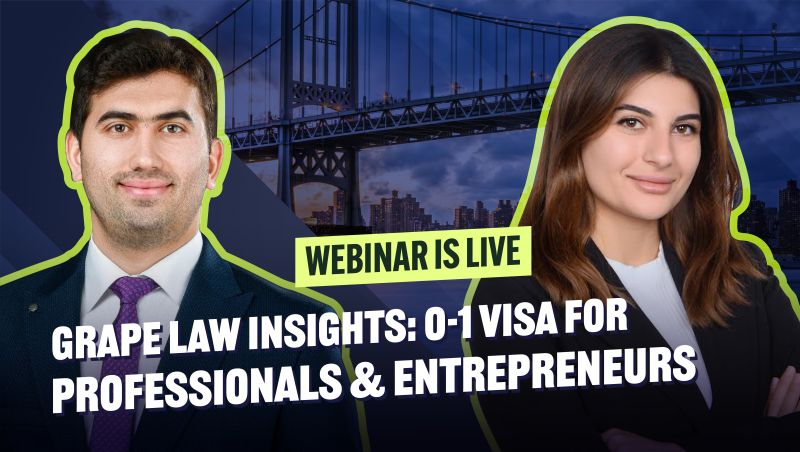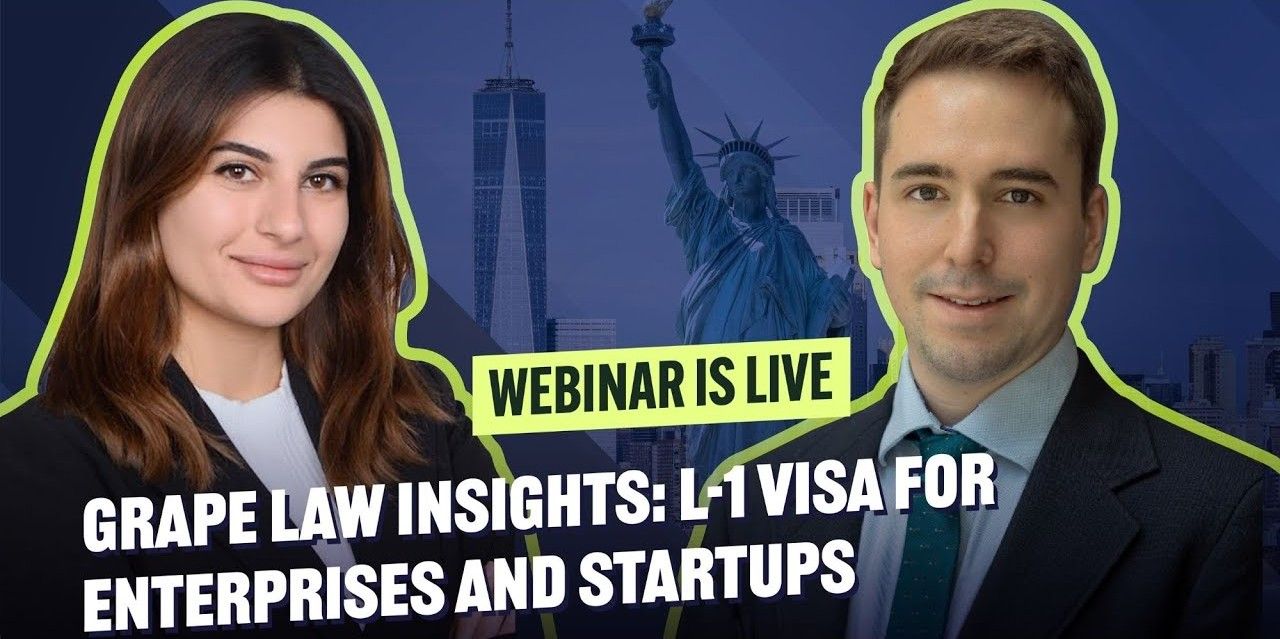While the H-1B visa is one of the most well-known options for foreign professionals seeking employment in the United States, its limited annual cap and lottery system prevent many qualified candidates from utilizing this opportunity. With only 85,000 H-1B visas available annually and applications typically far exceeding this quota, it becomes essential to consider alternative visa options. Fortunately, there are other viable pathways for legal employment in the U.S., with O-1 and L-1 visas being particularly attractive options for qualified professionals.
O-1 Visa for Individuals with Extraordinary Ability
The O-1 visa is designed for professionals who have demonstrated extraordinary ability in their field. This visa category allows individuals with international recognition in science, arts, education, business, athletics, or the television and motion picture industries to work in the U.S. One of the primary advantages of the O-1 visa is that it's not subject to an annual cap like the H-1B, meaning eligible individuals can apply at any time throughout the year.
O-1 Visa Categories
The O-1 visa is divided into two main categories:
- O-1A Visa: For individuals with extraordinary ability in science, education, business, or athletics.
- O-1B Visa: For individuals with extraordinary achievement in arts, motion picture, or television industries.
Both categories require applicants to prove they are among the top professionals in their respective fields. Each category has its own specific evaluation criteria.
O-1A Visa Criteria (Must Meet at Least Three):
- Receipt of nationally or internationally recognized prizes/awards
- Membership in associations requiring outstanding achievements
- Published material about the applicant in professional/major media
- Original scientific, scholarly, or business-related contributions of major significance
- Authorship of scholarly articles in professional journals or major media
- Evidence of high salary or remuneration
- Participation as a judge of others' work in the same field
- Employment in a critical or essential capacity for distinguished organizations
O-1B Visa Criteria (Must Meet at Least Three):
- Lead or starring role in distinguished productions
- Critical reviews or other published materials about the applicant
- Evidence of substantial commercial success
- Record of major commercial or critically acclaimed successes
- Recognition for achievements from organizations, critics, or experts
- Evidence of commanding high salary or other substantial remuneration
O-1 Visa Application Process
The O-1 visa petition must be filed by a U.S. employer or agent using Form I-129 (Petition for Nonimmigrant Worker). Self-petitioning is not permitted; you must have an employer sponsor.
The petition must include comprehensive documentation demonstrating your extraordinary ability, such as:
- Awards and recognitions
- Published materials
- Media coverage
- Letters of recommendation
- Other supporting evidence
Additionally, a consultation letter/expert opinion from a relevant U.S. peer group, labor organization, or management organization in your field is required.
O-1 Visa Duration and Extensions
Initial O-1 status is granted for up to three years. The visa can be extended in one-year increments indefinitely, as long as the continuation of the work or project can be demonstrated. This makes the O-1 visa particularly attractive for professionals planning long-term stays in the U.S.
Extension petitions should be filed before the current visa status expires. For extensions, you must prove that your project or work continues and your extraordinary ability is still required.
Dependents of O-1 Visa Holders
Spouses and unmarried children under 21 may accompany O-1 visa holders under O-3 status. However, O-3 visa holders are not authorized for employment in the U.S. If employment is necessary for dependents, they must qualify for and obtain their own work-authorized visa status.

Our expert attorneys deep dived into the O-1 Visa – its eligibility criteria, application process, and key insights for professionals and entrepreneurs seeking to work in the U.S. Access the webinar here.
L-1 Visa for Intracompany Transferees
The L-1 visa enables multinational companies to transfer executives, managers, and specialized knowledge employees to their U.S. offices. This visa category serves as a crucial tool for companies to transfer their global talent to the U.S. market. Like the O-1, the L-1 visa is not subject to an annual cap.
L-1 Visa Categories
The L-1 visa is divided into two categories:
- L-1A Visa: For executives and managers transferring to the U.S. to assume a managerial or executive position with the U.S. entity.
- L-1B Visa: For employees with specialized knowledge of the company's products, services, research, equipment, techniques, management, or other interests.
L-1 Visa Eligibility Requirements
To qualify for an L-1 visa, you must meet the following criteria:
- Qualifying Relationship: There must be a qualifying relationship between the U.S. and foreign entity (parent company, subsidiary, affiliate, or branch office).
- Employment Requirement: You must have worked for the foreign entity for at least one continuous year within the three years immediately preceding your admission to the U.S.
- Position Qualification: The U.S. position must be in an executive/managerial (L-1A) or specialized knowledge (L-1B) capacity.
- U.S. Entity Requirements: The U.S. employer must be a qualifying organization with a physical premises to conduct business operations. For new offices, additional requirements apply.
L-1 Visa Application Process
The process begins with the U.S. employer filing Form I-129 with USCIS. The petition must include documentation proving:
- The qualifying corporate relationship
- The applicant's employment history
- The nature of the U.S. position
- The company's ability to support the transfer
Large multinational companies may qualify for Blanket L certification, which streamlines the process for transferring multiple employees.
L-1 Visa Duration and Extensions
- L-1A: Initially granted for up to three years, extendable to a maximum of seven years
- L-1B: Initially granted for up to three years, extendable to a maximum of five years
- New Office L-1: Initially limited to one year, with extensions available upon demonstrating successful business establishment
Dependents of L-1 Visa Holders
Spouses and unmarried children under 21 may receive L-2 status. A significant advantage is that L-2 spouses are eligible for work authorization in the U.S. after obtaining their Social Security Number (SSN). They may work for any employer in any position.

We explored the L-1 Visa – its qualifications, application requirements, and essential information for enterprises and startups looking to expand their operations to the U.S. Access the webinar here.
Comprehensive Comparison: H-1B vs. O-1 vs. L-1 Visas
1. Annual Caps
- H-1B: Subject to an annual cap of 85,000 visas (65,000 general quota and 20,000 for U.S. advanced degree holders). Due to this limited quota, thousands of qualified professionals are unable to obtain H-1B visas each year.
- O-1 and L-1: Not subject to any annual quota limitations, allowing eligible candidates to apply throughout the year and have their qualifications and experience evaluated based merely on merit rather than chance.
2. Eligibility Requirements
- H-1B: Requires at least a bachelor's degree or equivalent work experience in the specific field, making it accessible to a relatively broad range of professions.
- O-1: Demands extraordinary ability and significant industry recognition, setting a higher threshold for achievement that not all professionals may be able to meet.
- L-1: Requires specific employment history with an international company and transfer to their U.S. office, making it suitable for professionals working within certain corporate structures.
3. Duration and Extensions
- H-1B: Initially granted for three years with a possible three-year extension. Further extensions beyond six years may be possible in certain circumstances, such as during the Green Card application process.
- O-1: Initially granted for up to three years with unlimited one-year extensions as long as the U.S. project or work continues. This provides crucial flexibility for those planning long-term stays in the U.S.
- L-1: L-1A visas are valid for up to seven years (initial three years plus extensions), while L-1B visas are limited to five years (initial three years plus extension). These represent maximum duration limits.
4. Employer Sponsorship
- H-1B: Tied to a specific employer, requiring a new H-1B petition for any employer change, which may limit job mobility.
- O-1: Also employer-specific, requiring new petitions for employer changes, but allows concurrent employment with multiple employers if separate petitions are filed with USCIS.
- L-1: Most restrictive of the three, limiting employment strictly to the transferring company's U.S. entity with no flexibility to work for other employers.
5. Spouse Work Authorization
- H-1B: Spouses receive H-4 visas and may legally work under specific conditions, such as when the H-1B holder is at certain stages of the Green Card process.
- O-1: Spouses receive O-3 visas but are not eligible for work authorization, requiring them to qualify for their own employment-based visa if they wish to work.
- L-1: Spouses receive L-2 visas and are eligible to work in the U.S. after obtaining their Social Security Number, making the L-1 visa more advantageous than the other two visa types in terms of family employment opportunities.
This comparison demonstrates that each visa category serves different purposes and populations, with distinct advantages and limitations. The best option depends on individual circumstances, qualifications, and long-term immigration goals.
